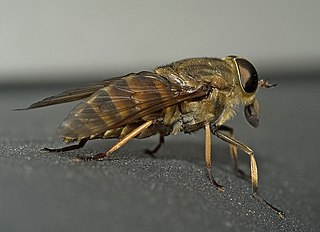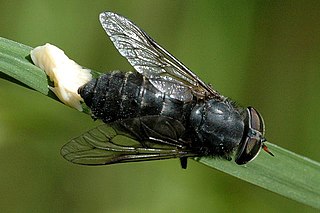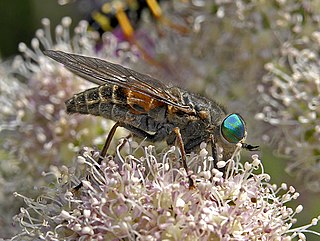Harold Oldroyd (24 December 1913 – 3 September 1978) was a British entomologist. He specialised in the biology of flies, and wrote many books, especially popular science that helped entomology to reach a broader public. His The Natural History of Flies is considered to be the "fly Bible". Although his speciality was the Diptera, he acknowledged that they are not a popular topic: "Breeding in dung, carrion, sewage and even living flesh, flies are a subject of disgust...not to be discussed in polite society". It was Oldroyd who proposed the idea of hyphenating the names of true flies (Diptera) to distinguish them from other insects with "fly" in their names. Thus, the "house-fly", "crane-fly" and "blow-fly" would be true flies, while the "dragonfly", "scorpion fly" and so on belong to other orders. He also debunked the calculation that a single pair of house-flies, if allowed to reproduce without inhibitions could, within nine months, number 5.6×1012 individuals, enough to cover the Earth to a thickness of 14.3 m (47 ft). Oldroyd calculated that such a layer would only cover Germany, but remarked "that is still a lot of flies".

Tabanus is a genus of biting horseflies of the family Tabanidae. Females have scissor-like mouthparts that aim to cut the skin. The horsefly can then lap up the blood. Horseflies of this genus are known to be potential vectors of anthrax, worms and trypanosomes. Some species, such as Tabanus bovinus, prefer bovine animals and are less harmful to humans. The genus contains hundreds of species and many species groups.

Tabanus sudeticus, also known as the dark giant horsefly, is a species of biting horse-fly. It is the heaviest fly in Europe.

Hybomitra is a genus of horse flies in the family Tabanidae. There are at least 240 described species in Hybomitra.

Haematopota pluvialis, the common horse fly or notch-horned cleg fly, or simply cleg in Scotland and northern parts of Ireland, is a species belonging to the family Tabanidae subfamily Tabaninae.

Chrysops caecutiens, common name splayed deer fly, is a species of horse fly belonging to the family Tabanidae. It is also known by the colloquial name Scotch Cleg.

Hybomitra aterrima is a species of horse flies in the family Tabanidae.
Haematopota subcylindrica is a species of horse-flies that can be found in such European countries as Austria, Belgium, Great Britain including the Isle of Man, Bulgaria, Czech Republic, Denmark, France, Germany, Hungary, Italy, Liechtenstein, Lithuania, Poland, Romania, Russia, Slovakia, Sweden, the Netherlands, and in all states of former Yugoslavia. It can also be found in Near East including Middle East.

Hybomitra montana, the slender-horned horsefly, is a species of horse flies in the family Tabanidae.

Hybomitra muehlfeldi is a species of horse flies belonging to the family Tabanidae. It is a Palearctic species with a limited distribution in Europe.
Hybomitra lurida is a species of horse-fly in the family Tabanidae. It is found across central and Northern Europe and Asia. It is a large fly, between 12–15 millimetres long.
Hybomitra lasiophthalma is a species of horse flies in the family Tabanidae.
Atylotus latistriatus is a Palearctic species of horse fly in the family Tabanidae.
Atylotus plebeius is a Palearctic species of horse fly in the family Tabanidae.

Hybomitra bimaculata is a Palearctic species of horse fly in the family Tabanidae.

Hybomitra distinguenda is a Palearctic species of horse fly in the family Tabanidae.
Hybomitra expollicata, also known as the striped horsefly, is a Palearctic species of horse fly in the family Tabanidae.
Hybomitra solstitialis is a Palearctic species of horse fly in the family Tabanidae. Continental authorities apply the name solstitialis to the coastal species Hybomitra ciureai of British authorities and regard British solstitialis as var. collini of Hybomitra bimaculata.










